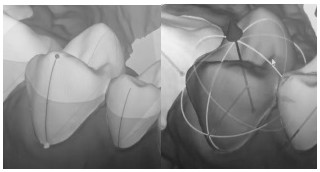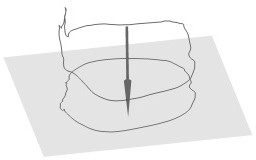Tooth and gingiva modeling method suitable for digital orthodontic application
A modeling method and tooth technology, applied in orthodontics, dentistry, dental restoration, etc., can solve the problem of inability to meet the requirements of orthodontic applications such as tooth root position, posture, collision interference, control of the extension direction and length of the tooth root surface, and control of the side of the tooth. Form and other issues
- Summary
- Abstract
- Description
- Claims
- Application Information
AI Technical Summary
Problems solved by technology
Method used
Image
Examples
Embodiment Construction
[0072] The present invention will be described in detail below in conjunction with the accompanying drawings and specific embodiments, wherein the schematic embodiments and descriptions are only used to explain the present invention, but are not intended to limit the present invention.
[0073] Such as Figure 1-Figure 10B As shown, a tooth modeling method suitable for digital orthodontic application described in this specific embodiment adopts the following steps:
[0074] A. Using the segmented crown surface to establish a tooth local coordinate system;
[0075] B. Determine the cross-sectional profile of the tooth root through the coordinate axis of the tooth root in the coordinate system;
[0076] C. Perform two-dimensional triangulation on the bottom surface of the tooth root, and add position constraints and tangential constraints to control the convex shape;
[0077] D. Using a plane approximation-based clustering method and two-dimensional triangulation to generate t...
PUM
 Login to View More
Login to View More Abstract
Description
Claims
Application Information
 Login to View More
Login to View More - R&D
- Intellectual Property
- Life Sciences
- Materials
- Tech Scout
- Unparalleled Data Quality
- Higher Quality Content
- 60% Fewer Hallucinations
Browse by: Latest US Patents, China's latest patents, Technical Efficacy Thesaurus, Application Domain, Technology Topic, Popular Technical Reports.
© 2025 PatSnap. All rights reserved.Legal|Privacy policy|Modern Slavery Act Transparency Statement|Sitemap|About US| Contact US: help@patsnap.com



